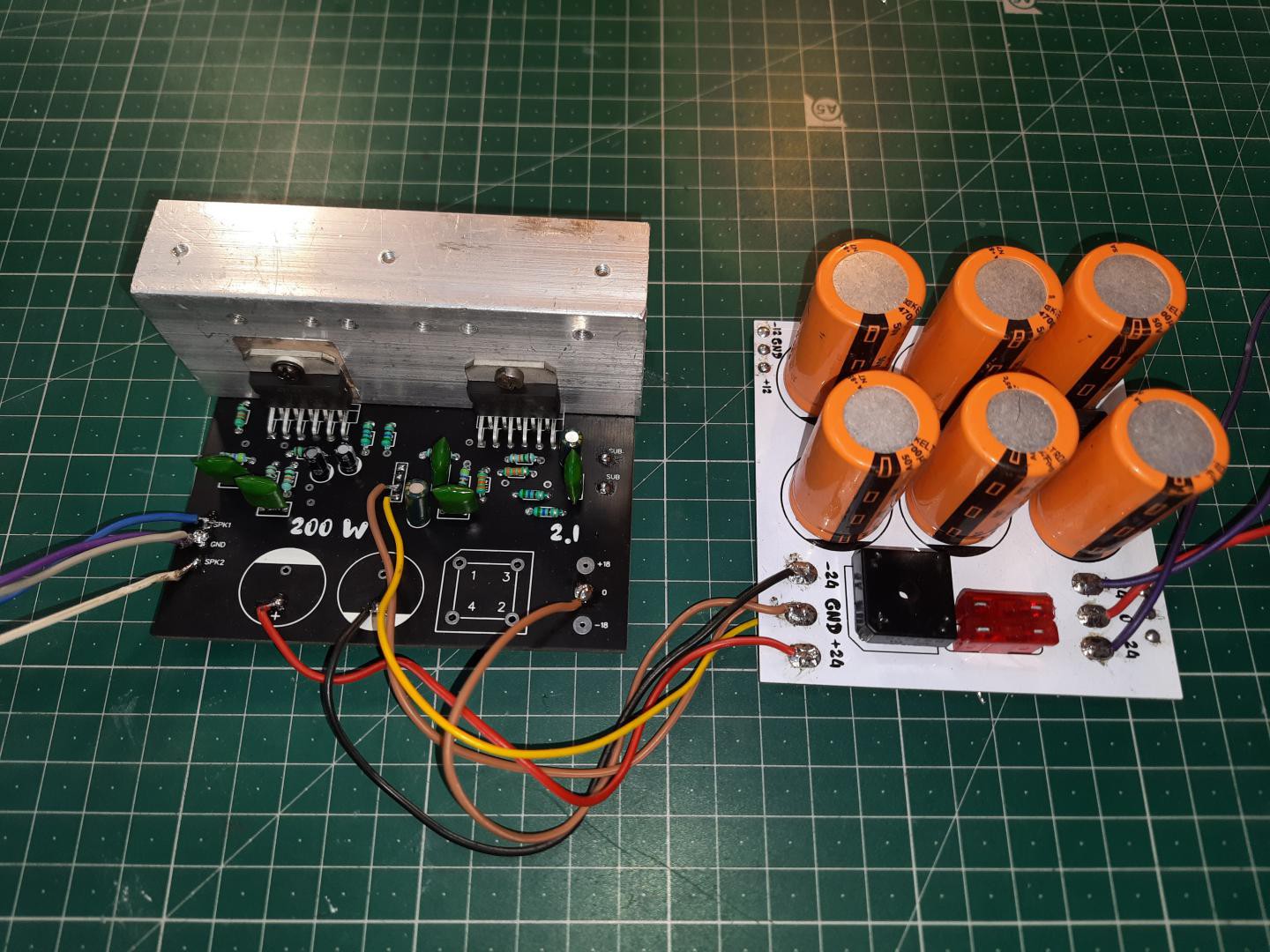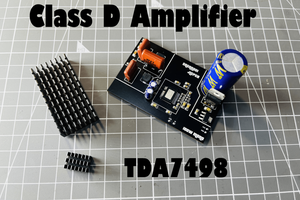Hello guys, last time I shared the circuit along with PCB layouts of TDA7265 amplifier. You supported my work too much and now I am here to share a new schematic of 2.1 channel power amplifier. Here 2.1 channel refers to 2 speakers and 1 sub-woofer. This time we are using 2 pairs of TDA7265. Which gives a power of 100w RMS to drive two 25w speakers and one 50w subwoofer.

TDA7265 features:
High output power : 25 + 25 W @ RL = 8 Ω, Vs = ± 20V.
Wide operating supply voltage range.
Output short circuit protection.
Thermal overload protection.
Very low number of components required to get the amplifier working.
No pop at turn-on/off.
Mute enable pin available.

I am using JLCPCB prototype PCB and SMT assembly service for a long time, and JLCPCB is the most reliable solution to my all projects. They are charging only $2 for 5 high quality PCB boards. And I have a great offer for you, if you sign-up using this link you will get worth $30 coupons and newcomer rewards. Try JLCPCB now and turn your project into products.
Components required:

1) TDA7265
2) 22K, 1K, 18K, 15K, 560R, 4.7R resistors
3) 100nf capacitor (polyester)
4) 10nf capacitor (polyester)
5) 1uf, 47uf, 3300uf capacitor (electrolytic)
6) Big heatsink
7) 6 ampere Rectifier brick
Circuit diagram:


As you Know TDA series is very popular for its low noise performance and High fidelity operation. To maintain these feature, we need proper external driver circuitry. TDA7265 can output a maximum of 25 watts per channel. We can bridge (combine the output of two stages) to make a 50w RMS to drive subwoofer. So, in this way One IC is to power up the speakers in stereo mode and other one is for single subwoofer. I modified the final circuit according to the datasheet and turned this into a cool looking PCB layout.

I added filter and rectifier section to this PCB, 2 big capacitor of 3300uf with 6A rectifier are enough for power section. We can use previously made preamplifier circuit with this amplifier board.
PCB and layout:
I designed the schematics in EasyEDA and made a single layered file this time. I jumped some of the connection in top layer. After placing components and keeping the size in mind this is the final PCB layout. I choose JLCPCB prototype service to get the best quality and budget PCB panels.

I am using 1.6mm thickness, HASL with lead finishing with black solder mask. Here are the Gerber files of this PCB, if you wan to use my design then download Gerbers from here. Ordering process is quite simple.

Go to JLCPCB> upload the Gerber files> choose color, thickness, material and finishing> checkout and make payment> get your PCBs at home just in 7 days.
Assembly and soldering:
First of all solder all the small components like resistor and diodes. This will help to assemble your circuit fast and accurate.

Then go for Capacitors, IC and other components.

Don't assemble power supply section if you already have dual filter power supply, this will help to measure the voltage to signal value by adjusting the volume.
Heatsink and thermals:

Because both the amplifier Ic's are of Class AB type, they generate a lot of heat. Without heatsink the design is not possible, it will automatically shut down by thermal protection.
So, we need a good big heatsink with proper heatsink compound to manage the thermals. Also cover one ic with mica sheet so that it will not make contact with other one, otherwise there will be a short circuit.
Transformer and power supply:

As shown above, this amplifier works on a dual power supply. We need a centre-tapped 5ampere transformer to make a 18-0-18 Dc power supply. Going to 24-0-24 will increase the risk of circuit and IC failure. Filter circuits can be applied at the output to remove ripples and unwanted AC components from the Dc output and make it more stable. The circuit diagram of the dual power supply is here.
Working and circuit details:
In a 100watts circuit, 18-0-18 volts 5...
Read more » ElectroBoy
ElectroBoy


 Sagar 001
Sagar 001